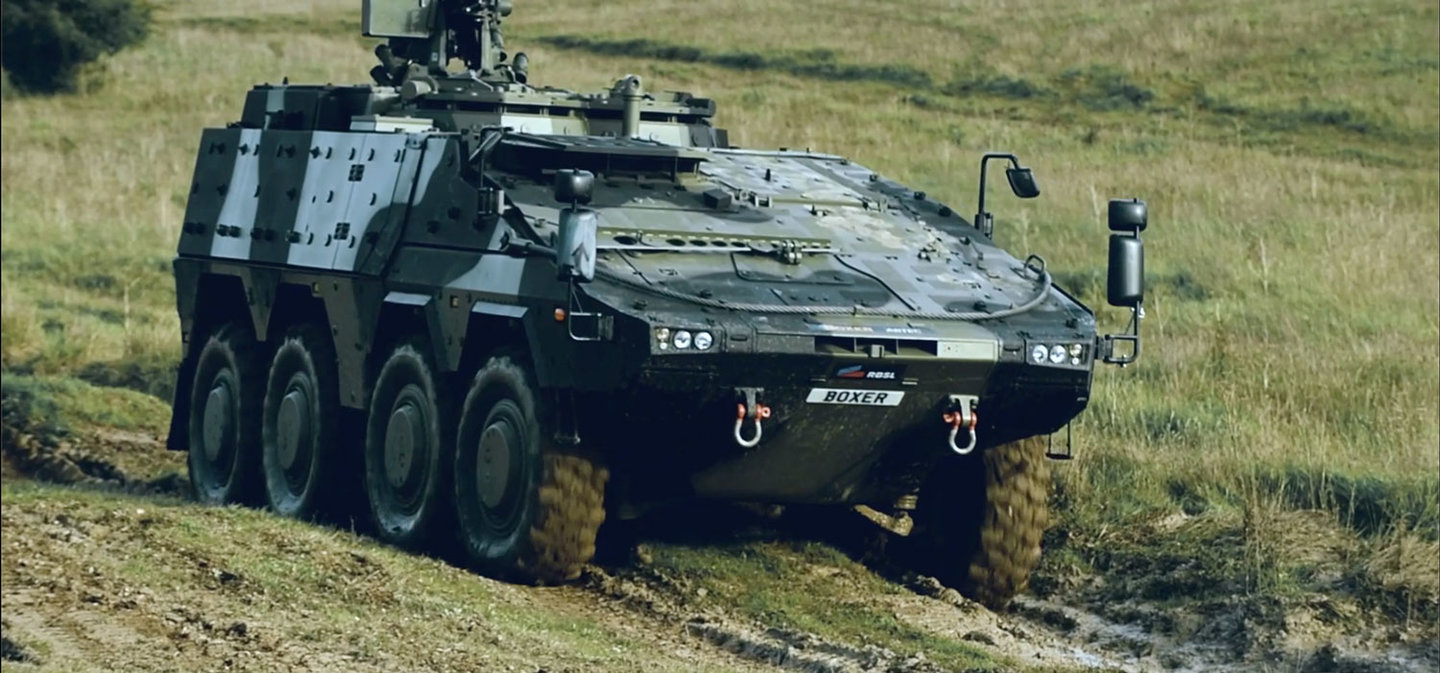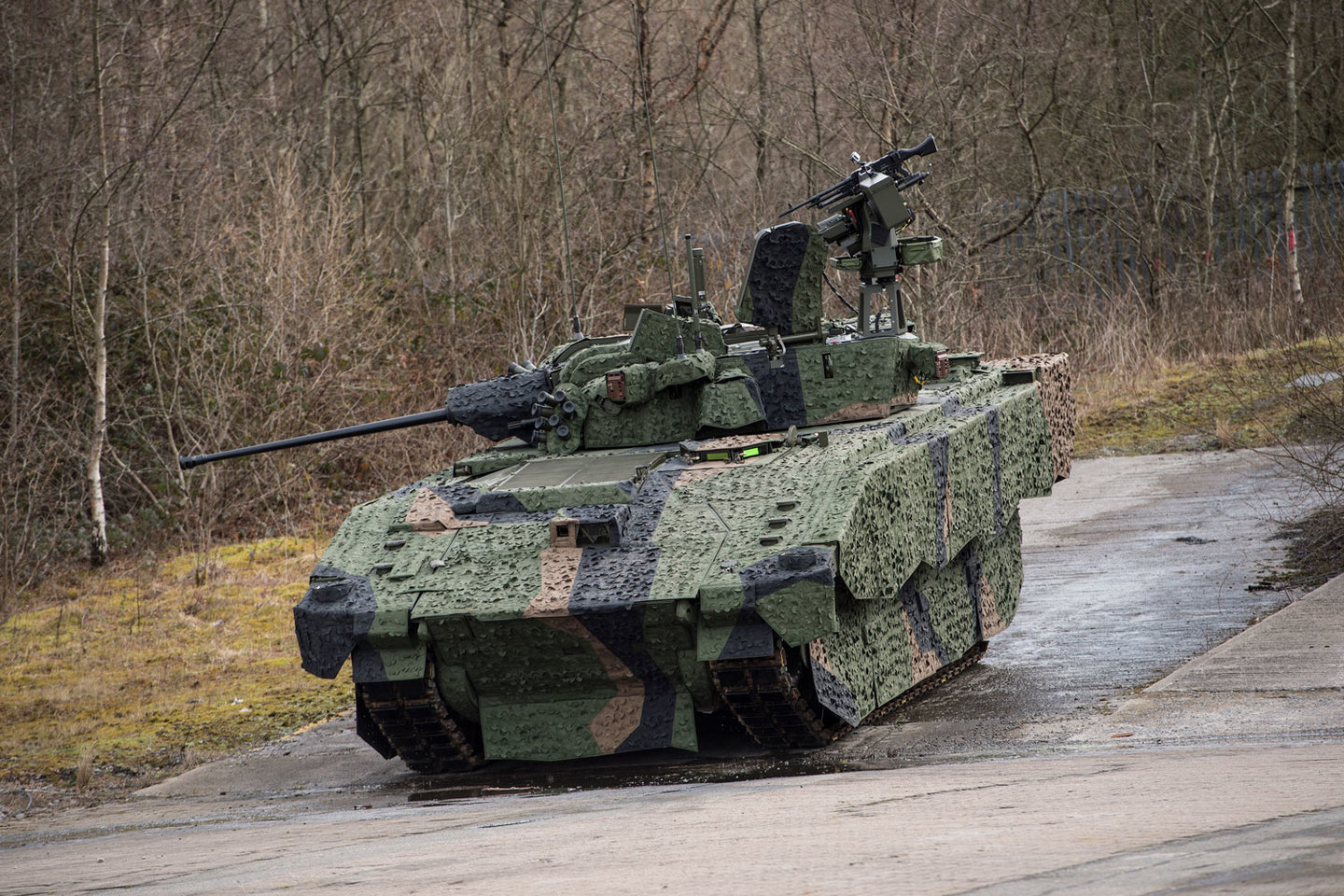land
The vehicles shaping the British Army’s future fleet
With the Challenger 2, Warrior 2, Boxer and AJAX, the British Army is slowly upgrading its land fleet. Harry Lye looks at the vehicles set to reshape UK land power.
// A British Army battle group featuring the Challenger 2 and Warrior among other vehicles. Image: Crown Copyright / MOD
Challenger 2: main battle tank
Unless the project – as has been rumoured – axed as part of the UK’s Integrated Review, Challenger 2 will continue to be the only main battle tank in the UK’s arsenal and, funding permitting, will undergo a sweeping life extension programme designed to ensure its continued relevance.
In April 2019, the Ministry of Defence’s (MOD) investment approval committee approved an expanded assessment phase to address enhancements to the tank’s lethality and survivability. In February 2020, Rheinmetall BAE Systems Land (RBSL) presented the British Army with a proposal to upgrade the tank, pending a full business case approval, which is due in late 2020. Demonstration and manufacture phases are set to be managed by RBSL.
In August, The Times reported that military chiefs were drawing up plans to axe the UK’s fleet of main battle tanks and armoured fighting vehicles in favour of attack aviation and cyber capabilities. The Times quoted a government source as saying: “We know that a number of bold decisions need to be taken in order to properly protect British security and rebalance defence interests to meet the new threats we face.”

The future of the Challenger 2 may depend on the outcome of the UK’s Integrated Review. Image: Crown Copyright / MOD
Warrior: armoured fighting vehicle
Managed by Lockheed Martin, the Warrior Capability Sustainment Programme (WCSP) aims to equip the armoured fighting vehicle with the CTAi 40mm cannon, upgrading its firepower. A number of improvements to the vehicle’s electrical system are also planned.
WCSP is part of the British Army's Armoured Infantry 2026 (AI26) Programme, designed to keep the vehicles in service until the 2040s. It also includes other improvements, such as 360˚ local situational awareness cameras, modular armour mounting systems and enhanced power generation and distribution.
In a press briefing earlier this year, Lockheed Martin said it was anticipating a production contract for the vehicles to be awarded in 2021, following a number of successful battlefield missions.
As the vehicle is still not under a production contract, there has been no confirmation of the number of Warrior infantry fighting vehicles that will be converted under WCSP, nor is there an indication of when initial operating capability is expected.
Alongside the Challenger 2, Warrior is one of the vehicles that may face cuts according to The Times. Commenting to the newspaper, an MOD spokesperson said: “Our commitment to NATO is unwavering, and the UK recognises that as a global military power our greatest strength remains our alliances. We are engaging our international allies and industry partners as we develop and shape defence’s contribution to the Integrated Review.”

Ongoing upgrades will keep the Warrior vehicles in service until the 2040s. Image: Crown Copyright / MOD
Boxer: mechanised infantry vehicle
In late 2019, the MOD signed a contract worth £2.8bn with ARTEC and OCCAR to deliver around 500 Boxer vehicles across a number of variants. The Boxer MIV will play a key role in the British Army’s STRIKE capability, allowing it to deploy divisions across large distances under their own power.
Under the contract, 60% of the vehicles by value is set to be built in the UK with work split between a number of companies, including RBSL and WFEL. At the time of the contract award, Defence Secretary Ben Wallace said: “Our men and women of the armed forces deserve to have the best equipment to do their job. The Boxer vehicle is a leader in its field and I look forward to it arriving in units from 2023.”
The first of the 500 Boxer MIV are set to enter service in 2023, where they will serve alongside AJAX vehicles in STRIKE brigades.
The British Army has had a stop-start relationship with the Boxer, as the UK was an initial member of the consortium to design the vehicle in the 1990s. The UK dropped out of the programme in 2003 to pursue other platforms, later coming back to the vehicle in 2018.
Boxer is designed around a double-V hull that deflects blasts delivered to the vehicle’s underside by mines or improvised explosive devices and features ‘mission modules’ which can be changed in less than an hour.

The Boxer vehicles will enter service in 2023. Image: British Army
AJAX: common platform armoured vehicle
AJAX is a family of six armoured vehicles developed by General Dynamics UK, offering what the company calls “best-in-class protection and survivability, reliability and mobility and all-weather intelligence, surveillance, target acquisition and recognition (ISTAR) capabilities”.
The six variants are designed for ISTAR, transport and a host of other capabilities. The AJAX features the same CTAi 40mm cannon which is part of the Warrior CSP upgrade package.
In total, across the six variants, the British Army has ordered 589 AJAX vehicles that will work alongside Boxer MIVs in STRIKE formations. At the time of its order, AJAX represented the biggest single order for armoured vehicles by the British Army for the best part of two decades.

A prototype of the AJAX vehicle. Image: Crown Copyright / MOD